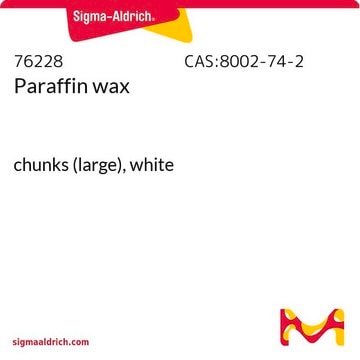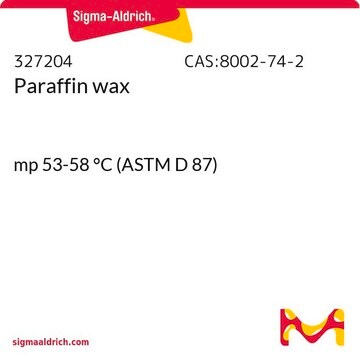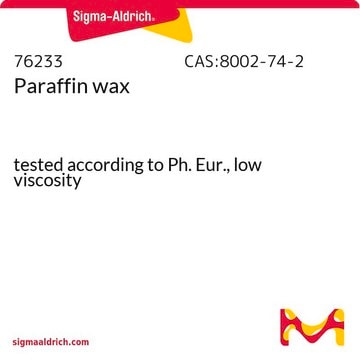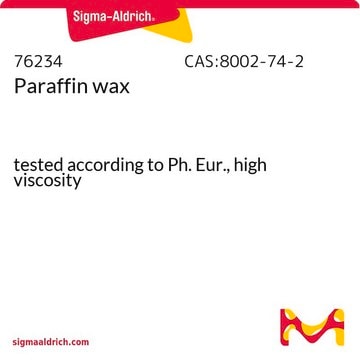Recommended Products
grade
purum
Quality Level
form
crystalline (chunks)
powder or solid
transition temp
solidification point 60-65 °C
InChI key
JWHAUXFOSRPERK-UHFFFAOYSA-N
Looking for similar products? Visit Product Comparison Guide
Storage Class Code
11 - Combustible Solids
WGK
nwg
Flash Point(F)
602.6 °F - Pensky-Martens closed cup
Flash Point(C)
317 °C - Pensky-Martens closed cup
Personal Protective Equipment
dust mask type N95 (US), Eyeshields, Gloves
Choose from one of the most recent versions:
Already Own This Product?
Find documentation for the products that you have recently purchased in the Document Library.
Customers Also Viewed
Haohao Zhong et al.
Diagnostic molecular pathology : the American journal of surgical pathology, part B, 22(1), 52-58 (2013-02-02)
We report a hydrothermal pressure method (pressure cooking) for simultaneous deparaffinization and lysis of formalin-fixed paraffin-embedded tissue followed by conventional chaotropic salt column purification to obtain high-quality DNA. Using this method, the release of DNA occurred within the first minute
Wisam Al-Faqheri et al.
PloS one, 8(3), e58523-e58523 (2013-03-19)
This paper introduces novel vacuum/compression valves (VCVs) utilizing paraffin wax. A VCV is implemented by sealing the venting channel/hole with wax plugs (for normally-closed valve), or to be sealed by wax (for normally-open valve), and is activated by localized heating
Abdulazeez Salawu et al.
PloS one, 7(11), e50415-e50415 (2012-12-05)
Most soft tissue sarcomas are characterized by genetic instability and frequent genomic copy number aberrations that are not subtype-specific. Oligonucleotide microarray-based Comparative Genomic Hybridisation (array CGH) is an important technique used to map genome-wide copy number aberrations, but the traditional
Yu Seob Shin et al.
Urology, 81(2), 437-441 (2013-02-05)
To introduce a new repair technique, inverted V-shape, for penile paraffinoma without necrosis of the ventral skin anastomosed. From March 2006 to July 2012, 34 patients underwent penile paraffinoma repair using the T-style or a new operation procedure, the inverted
Roman Zimmermann et al.
Plant physiology, 152(1), 356-365 (2009-11-21)
In an approach to study lateral root development in monocots, genome-wide searches for homologs of the Gibberellic Acid Stimulated Transcript-like (GAST-like) gene family in rice (Oryza sativa) and maize (Zea mays) were carried out. Six novel GAST-like genes in rice
Our team of scientists has experience in all areas of research including Life Science, Material Science, Chemical Synthesis, Chromatography, Analytical and many others.
Contact Technical Service
